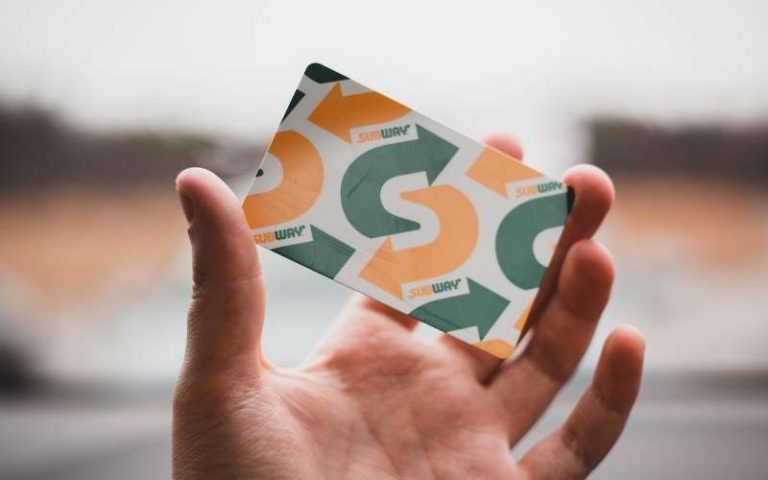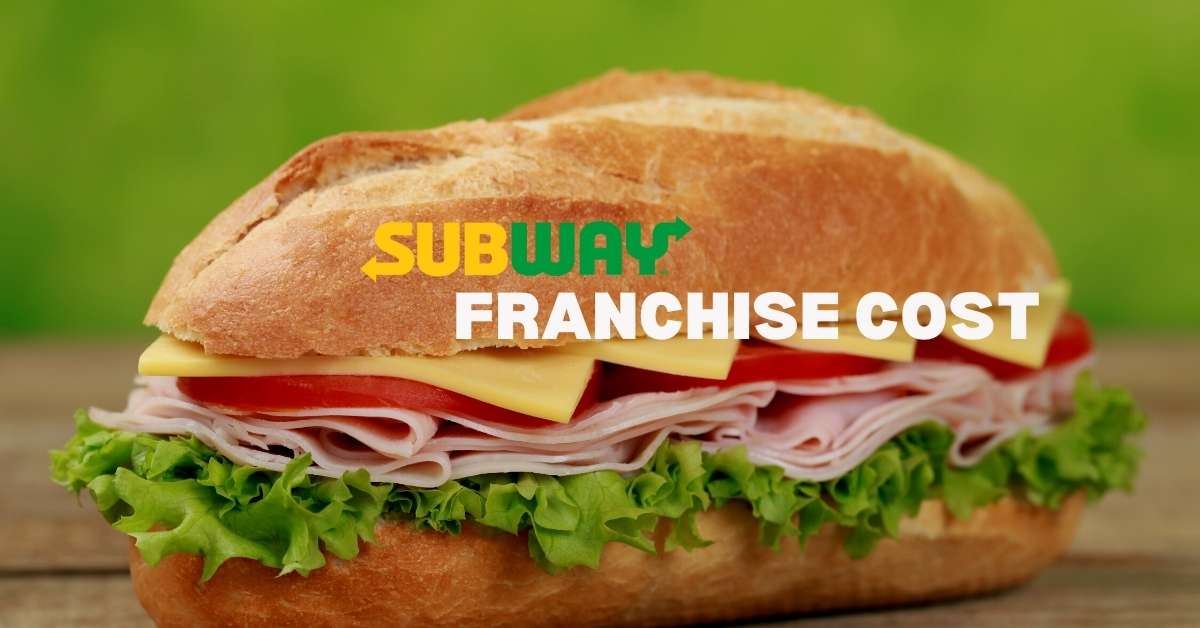Are you considering owning your own business or looking to invest in a profitable opportunity in the fast-food industry? One key factor to consider is the Subway franchise cost. With over 40,000 Subway restaurants worldwide, this largest restaurant chain has the potential to generate substantial profits.
However, investing in a franchise requires a significant financial commitment, and it’s crucial to understand the costs involved before making a decision.
In this blog, we’ll explore the factors that impact the earning potential of a Subway franchise and help you determine whether it aligns with your financial goals.
About Subway Franchise
Subway boasts a vast global presence, operating in over 100 countries with a network of nearly 36,592 restaurants and thousands of franchisees as of 2023.
Subway’s franchise business model was first established in 1974 in Wallingford, Connecticut, setting the foundation for one of the largest fast-food chains worldwide.
As a Subway franchise owner, you gain access to numerous features and programs designed to help you run your business effectively. Here are some key features that Subway offers its franchisees:
- Strong Brand Identity
- Comprehensive Training Program
- Site Selection and Build-out Assistance (On-Site Representative)
- Access to Proprietary Products
- Ongoing Support (account health monitoring and inventory management tasks)
- Loyalty Program
- Menu Innovation
During the application process to become a Subway franchisee or multi-unit Subway store operator, the company’s Development Agents provide local support and ongoing assistance to ensure smooth operations.
Subway’s Humble Beginnings
Subway’s story began in 1965 when Fred DeLuca, a 17-year-old aspiring doctor, sought financial advice from family friend Dr. Peter Buck. Buck, a nuclear physicist, suggested opening a submarine sandwich shop and invested $1,000 in the idea.
The two became business partners, opening their first sub-shop, Pete’s Super Submarines, in Bridgeport, Connecticut. Known for customization, fresh food, and affordability, their concept grew rapidly, laying the foundation for the Subway brand we know today.
By 1974, with 16 sub-shops under their belt, DeLuca and Buck turned to franchising to expand their business, reaching their goal of 32 stores and beyond.
Subway Franchise Cost

How much does it cost? One of the major benefits of a Subway franchise is its relatively low initial franchise fee and initial investment compared to other fast-food chains.
For example, while opening a McDonald’s franchise requires an initial investment between $1,215,000 and $1,945,000, along with a $45,000 franchise fee, a Subway franchise typically costs between $116,000 and $263,000, with a lower initial franchising cost of $15,000. This makes it a more accessible option for small-scale entrepreneurs.
The overall initial investment depends on factors like the location type (whether it’s a traditional or non-traditional Subway), size, and other variables.
The Cost of Acquiring an Existing Subway

Purchasing an existing Subway unit involves additional costs beyond the purchase price. The Subway franchise fees for an established restaurant can vary based on location type, age, and financial performance.
Additional expenses may include a transfer fee of approximately $7,500 for training programs and support, as well as potential upgrades, marketing fees, and ongoing operating expenses. Subway requires a minimum of $15,000 in non-borrowed personal resources to qualify as a franchisee.
Before acquiring an existing franchise, conduct thorough due diligence, including reviewing past cash flow and operational data. It’s advisable to consult with a consultant to ensure the investment aligns with your financial goals.
Buying a New Subway Franchise Unit
Opening a new Subway franchise involves a lower initial investment compared to many other fast-food franchises.
However, the initial franchise fee, operating system expenses, and other startup costs—such as acquiring real estate, renovation, construction costs, and signage—vary based on the location type and real estate costs. For example, high-demand areas like New York City require more liquid capital.
Subway franchisees must also budget for ongoing costs, including a 12.5% fee on weekly gross sales, with 8% going toward franchise royalty fees and 4.5% toward marketing fees.
Depending on the location, estimating sales figures and analyzing average sales can help forecast gross revenues. This financial forecasting will be vital in understanding the franchise’s long-term viability.
Traditional vs. Non-Traditional Subway Locations
Traditional Subway: These franchises adhere to standardized menu items, decor, and equipment requirements. Costs include the initial franchise fee, real estate, property improvements, advertising fee, and setup expenses, ranging from $10,000 to $15,000.
Non-Traditional Location: These are located in department stores, military bases, gas stations, or other non-traditional settings. Costs are typically lower due to the unique location type, and the franchise fee remains the same, ranging from $10,000 to $15,000.
Overview of Subway Franchise Fees
When considering the overall initial investment in a Subway franchise, here’s a breakdown of associated costs:
- Real estate and property improvements
- Professional services
- Supplies and equipment
- Furniture and fixtures
- Insurance
- Royalty fee
- Marketing fees and Advertising fees
- Working capital for at least three months
- Miscellaneous expenses
To get a full understanding of how much it costs, it’s essential to review the company’s Franchise Disclosure Document (FDD), speak with existing franchise owners, and explore financing options. This comprehensive approach will help you determine if owning a Subway franchise aligns with your financial goals.
Is It Worth the Earning Potential?

To determine whether the cost of Subway franchise is worth the earning potential, it’s essential to understand the factors that drive Subway franchise profitability.
With over 40,000 Subway restaurants worldwide, this franchise offers a recognizable brand and a strong position within the fast food industry. However, the true success of your investment will depend on market dynamics, costs, and your ability to operate efficiently.
Prospective Subway franchise owners must consider key aspects like gross sales, ongoing fees, and the initial financial commitment to determine if the investment aligns with their goals.
The total cost to open a Subway franchise, including the franchise fee, startup costs, and franchise royalties, must be weighed against the projected earnings and Subway franchise profitability.
1. Comprehensive Cost Breakdown
One of the first questions potential investors ask is, “How much does it cost to open a Subway franchise?”
Subway’s initial investment is generally lower than many other fast-food franchises, making it an accessible option for many entrepreneurs. The initial franchise fee for Subway is $15,000, while the total cost of Subway franchise ranges between $116,000 and $263,000, depending on the location type and build-out requirements.
Other important costs include:
Franchise royalty fees
Subway charges 8% of gross sales minus taxes, which is paid weekly.
Marketing fees
An additional 4.5% of gross sales is allocated to marketing to promote the Subway brand.
Financing options
Subway offers several financing options to assist franchisees with startup costs, including an equipment leasing program. However, it’s essential to evaluate loan terms and interest rates carefully.
These ongoing costs affect Subway franchise profitability, so understanding and planning for these expenses is key.
2. Market Dynamics and Location

The success of a Subway franchise depends heavily on the local market conditions and the location type of your restaurant. A location inside a high-traffic area such as a department store or on military bases could generate higher gross sales compared to suburban or rural locations.
To assess the viability of your potential location, consider the following:
Demographics
A well-suited customer base with high traffic volumes can drive higher sales and repeat business.
Competition
Look at nearby competitors and identify ways your Subway can differentiate itself—whether through pricing, menu options, or superior customer service.
Economic conditions
Local economic factors, such as employment rates and disposable income, will influence customer spending and overall gross sales.
3. Profit Margins and Financial Performance

Subway franchise profitability largely depends on managing costs and maximizing gross sales, just like in any other franchise system.
While Subway’s lower initial investment can be an advantage compared to other franchise opportunities, effectively controlling operating expenses is key to maintaining a strong profit margin and achieving long-term success.
For example, efficient labor scheduling, careful inventory management, and minimizing food waste are essential strategies that can help a franchise owner boost profitability. These actions not only reduce costs but also improve the overall efficiency of the business.
To estimate your potential earnings, consider the following:
Gross Sales
Depending on the real estate location, a typical Subway restaurant can generate annual revenues ranging from $300,000 to $500,000.
With a profit margin of approximately 15-20%, a franchisee could potentially earn $45,000 to $100,000 annually before taxes and other expenses. This highlights the importance of choosing the right location and controlling operating costs within the franchise system.
Past Financial Performance
When evaluating a Subway franchise opportunity, especially if you’re considering buying an existing unit, it’s crucial to review the store’s past financial performance.
By analyzing historical gross sales, expenses, and customer trends, you’ll gain a clearer understanding of what to expect moving forward and how this investment might align with your financial goals and required net worth.
4. Multi-Unit Franchise Ownership

For those seeking to maximize profits through franchise ownership, Subway offers excellent opportunities for multi-unit owners.
By operating multiple Subway franchises, franchisees can leverage shared resources, streamline operations, and significantly increase overall profitability.
Multi-unit franchisees can often achieve higher Subway franchise profitability by taking advantage of economies of scale—purchasing in bulk, reducing operational costs, and cross-promoting between locations.
5. Ongoing Support and Training Program
Subway offers extensive support and training programs, including training classes for franchisees, helping them run their operations smoothly and effectively. This support covers a wide range of areas, such as site selection, restaurant build-out, staff training, and marketing.
Additionally, Subway’s Development Agents provide ongoing support, ensuring that franchise owners have access to the tools and guidance necessary for success. The franchise agreement also includes the resources needed to maintain consistent quality and service across all locations.
Subway continuously updates its menu options to align with consumer preferences and trends, which can help drive repeat business and boost gross sales.
Furthermore, Subway has invested in digital ordering platforms, catering programs, and non-traditional platforms like Subway Grab & Go to attract more customers and improve overall profitability.
6. Risk Management and Long-Term Viability
Investing in this franchise also comes with certain risks, such as market saturation, changes in consumer behavior, and economic downturns. To mitigate these risks, it’s crucial to conduct thorough research before signing a franchise agreement.
This includes reviewing Subway’s Franchise Disclosure Document (FDD), analyzing the competition, and consulting with a current Subway franchisee to gain insights into potential challenges and opportunities.
Additionally, examining actual records of financial performance and operational data from existing franchisees can provide a clearer picture of expected profitability and risk factors.
Subway’s ongoing remodeling initiatives and its focus on enhancing the customer experience through modernized stores and technology adoption are strategies designed to keep the brand competitive in the fast food industry.
These initiatives may help franchisees attract more customers, enhance Subway franchise profitability, and ensure long-term success.
Is the Subway Franchise Worth the Investment?
For most franchises, Subway offers an accessible entry into the fast food industry with a relatively low initial investment and franchise fee. With so many franchised outlets, this well-established business model and global brand presence provide a solid foundation for potential franchise owners.
Success depends on managing franchise royalties, market conditions, and operational efficiency. Multi-unit owners can also benefit from economies of scale to enhance Subway franchise profitability.
With continuous support from the parent company and ongoing innovations, Subway remains a competitive and viable option for franchise investment.
In short, with careful planning and smart management, Subway franchises can be a profitable opportunity. Ready to explore if Subway is the right fit for you? Speak with a franchise consultant today to gain expert guidance and take the next step toward owning your own Subway franchise.



